When you think of parrots, you might imagine small, colorful birds perched on someone’s shoulder, mimicking human speech. While many parrots are indeed small and playful, some species are absolute giants in the bird world. With vibrant feathers, impressive wingspans, and strong personalities, these large parrots are wonders of nature.
In this comprehensive guide, we’ll explore the largest parrots in the world, covering their sizes, habitats, unique features, and conservation statuses. From the Hyacinth Macaw, the world’s longest parrot, to the flightless and hefty Kakapo, we’ve got all the details you need to know.
Whether you’re a bird enthusiast, nature lover, or simply curious about these feathered giants, this article will give you an in-depth look at 10 of the most magnificent large parrots on Earth.
Parrots come in all shapes and sizes, ranging from tiny budgerigars to massive macaws. But why do some parrots grow so large? There are a few factors:
Adaptation to Habitat: Larger parrots are often found in environments with ample food resources, like tropical rainforests. Their size allows them to access tougher nuts, seeds, and fruits.
Survival Strategy: Bigger parrots have fewer natural predators, thanks to their size and strong beaks.
Longevity: Large parrots tend to have longer lifespans, some living 50–70 years or more.
Now, let’s meet the 10 largest parrots that stand out for their size, beauty, and incredible traits.
Scientific Name: Anodorhynchus hyacinthinus
Length: Up to 100 cm (3.3 ft)
Weight: 1.2–1.7 kg (2.6–3.7 lbs)
Key Feature: Vivid cobalt-blue feathers and a powerful beak
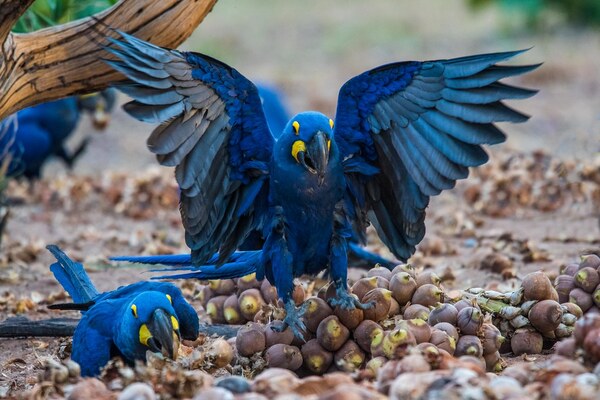
The Hyacinth Macaw is the undisputed giant of the parrot world, holding the title of the longest parrot. With its dazzling cobalt-blue plumage and bright yellow markings around the eyes and beak, it’s often referred to as the “gentle giant” of parrots.
Native to the savannas and rainforests of Brazil, Bolivia, and Paraguay, Hyacinth Macaws are skilled foragers. They rely heavily on palm nuts, which they crack open using their incredibly powerful beaks. In fact, their beaks are so strong they can exert enough pressure to break metal wires!
Unfortunately, these beautiful birds are classified as vulnerable due to habitat loss, illegal pet trade, and hunting. Conservation efforts, such as protected reserves and breeding programs, are crucial to their survival.
Scientific Name: Ara chloropterus
Length: 95 cm (3.1 ft)
Weight: 1–1.7 kg (2.2–3.7 lbs)
Key Feature: Brilliant red body with green and blue wings
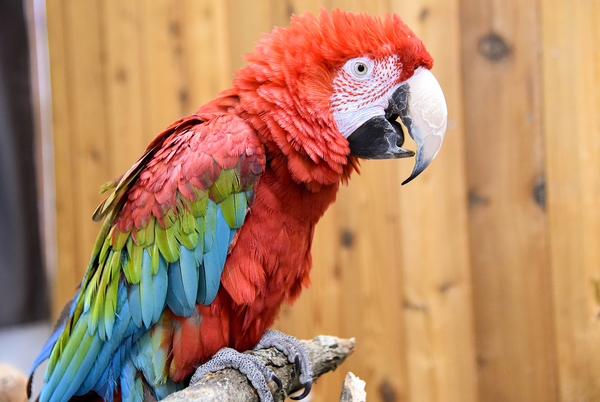
The Green-Winged Macaw, also called the Red-and-Green Macaw, is one of the largest and most recognizable parrots. Its deep red plumage, accented with green and blue wing feathers, creates a stunning visual contrast.
These parrots are found in the dense rainforests of South America, including the Amazon basin. They are known for their intelligence, affectionate nature, and loud vocalizations. Green-Winged Macaws form strong pair bonds and often stay with their mate for life.
Green-Winged Macaws have facial feather patterns that are as unique as human fingerprints!
Scientific Name: Ara macao
Length: 90 cm (2.9 ft)
Weight: 900–1,200 g (2–2.6 lbs)
Key Feature: Red, yellow, and blue feathers
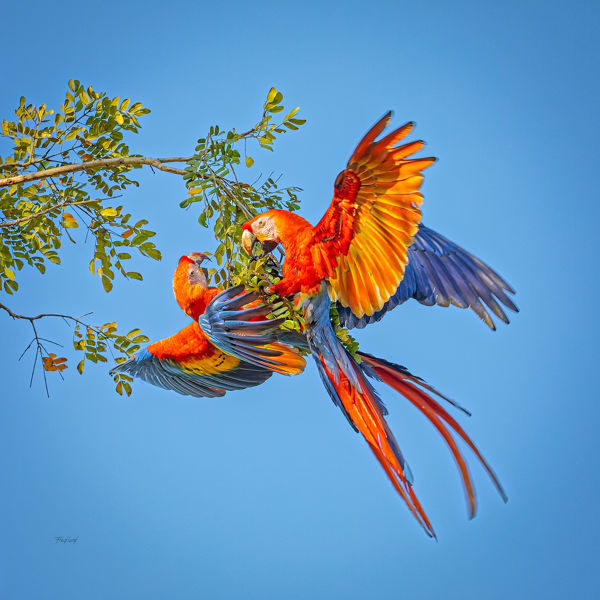
The Scarlet Macaw is one of the most iconic parrots, often seen as a symbol of tropical beauty. With its vibrant red plumage, yellow shoulders, and blue tail feathers, it’s hard to miss this stunning bird.
Native to Central and South America, Scarlet Macaws are highly social and intelligent birds. They travel in flocks and communicate with loud, raucous calls.
While still widespread, Scarlet Macaws face threats from deforestation and illegal pet trade, highlighting the need for habitat protection.
Scientific Name: Ara ararauna
Length: 86 cm (2.8 ft)
Weight: 900–1,300 g (2–2.8 lbs)
Key Feature: Striking blue wings and yellow underparts
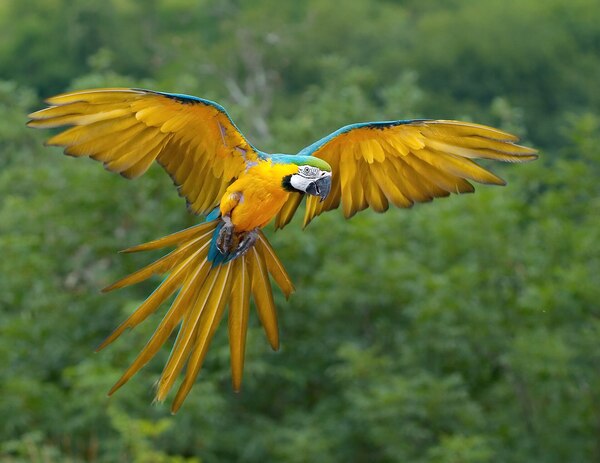
The Blue-and-Yellow Macaw is a favorite among bird lovers, known for its cheerful appearance and playful personality. Its vivid blue wings and bright yellow underparts create a stunning visual contrast.
Native to South America, especially the Amazon basin, these macaws thrive in forests and swamps. They are intelligent, curious, and capable of mimicking human speech, making them popular pets (although wild capture is unethical).
Scientific Name: Ara ambiguus
Length: 85 cm (2.8 ft)
Weight: 1–1.3 kg (2.2–2.9 lbs)
Key Feature: Predominantly green feathers
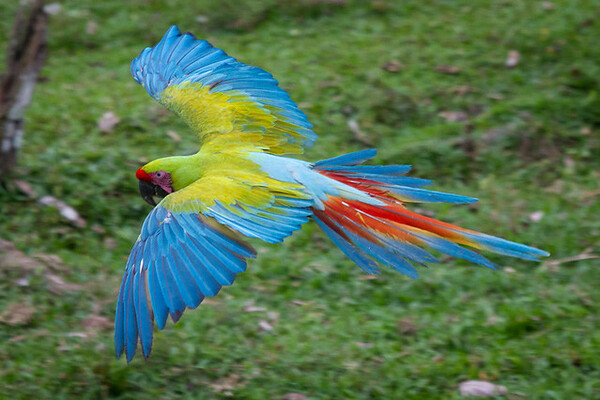
The Great Green Macaw is a magnificent but critically endangered parrot. Its lush green feathers help it blend into its rainforest habitat.
These macaws are native to Central and northern South America, inhabiting tropical forests. They are strong fliers and foragers, feeding on nuts, fruits, and seeds.
With deforestation and illegal trade threatening their survival, the Great Green Macaw is classified as critically endangered. Urgent conservation measures are necessary to save this species.
Scientific Name: Ara chloropterus
Length: 95 cm (3.1 ft)
Weight: 1–1.7 kg (2.2–3.7 lbs)
Key Feature: Dominantly red feathers with green wings
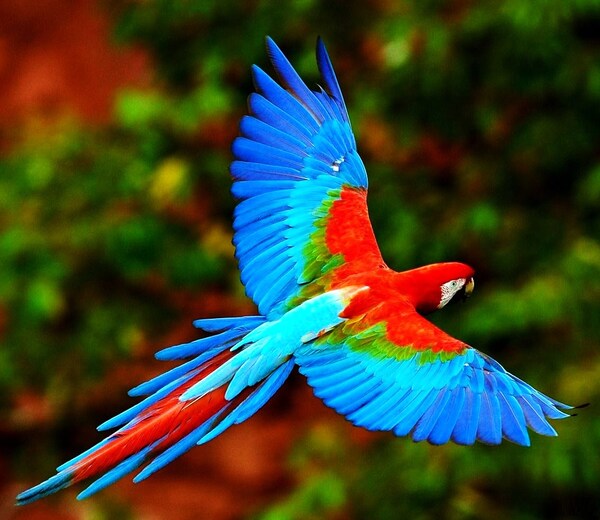
The Moluccan Cockatoo, also known as the Salmon-Crested Cockatoo, is famous for its pale pink plumage and affectionate temperament.
Native to the islands of Indonesia, this parrot is intelligent, playful, and often forms strong bonds with humans. They love attention and are known to be quite vocal.
Scientific Name: Cacatua moluccensis
Length: 52 cm (1.7 ft)
Weight: 850–1,100 g (1.8–2.4 lbs)
Key Feature: Pale pink feathers and large crest
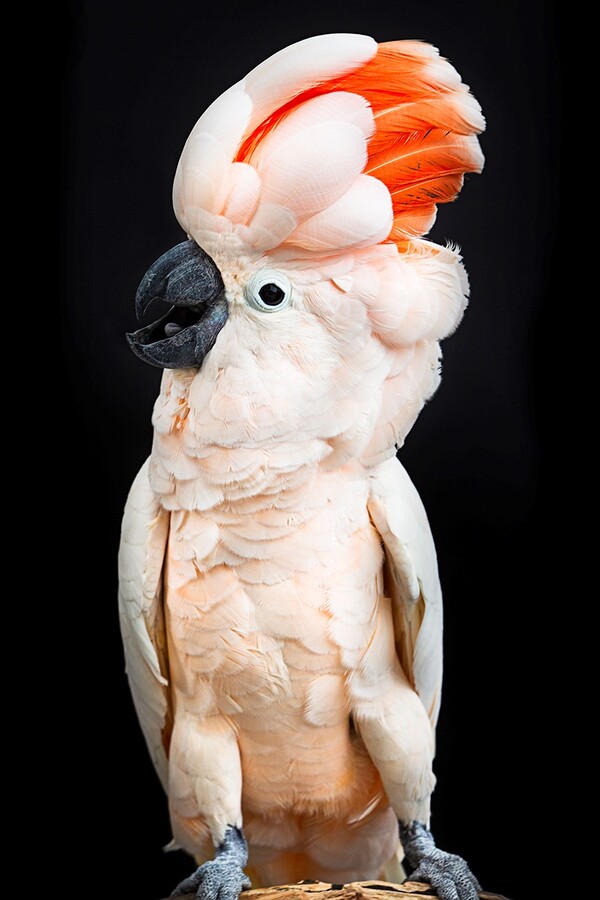
The Major Mitchell’s Cockatoo is one of the most visually striking cockatoos, thanks to its beautiful red-and-yellow crest and soft pink feathers.
These parrots are found in Australia’s arid and semi-arid regions, where they nest in tree hollows and feed on seeds, nuts, and fruits.
Scientific Name: Lophochroa leadbeateri
Length: 45 cm (1.5 ft)
Weight: 400–600 g (0.8–1.3 lbs)
Key Feature: Red-and-yellow crest
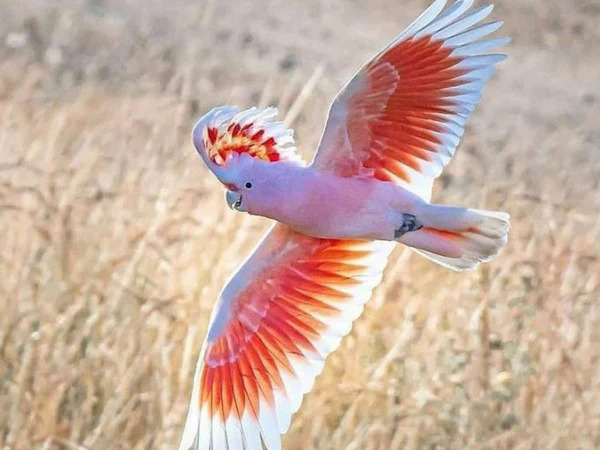
The Sulphur-Crested Cockatoo is a lively and vocal bird, well-known for its bright yellow crest and playful nature.
These cockatoos are native to Australia and New Guinea, where they are common in both urban and wild areas. Their intelligence and loud calls make them popular but demanding pets.
Scientific Name: Cacatua galerita
Length: 50 cm (1.6 ft)
Weight: 800–1,000 g (1.7–2.2 lbs)
Key Feature: Dominantly red feathers with green wings
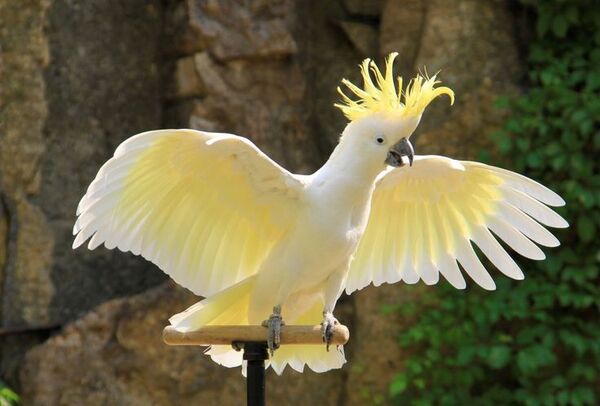
The Red-and-Green Macaw is another forest giant, often mistaken for the Scarlet Macaw due to its similar size and red plumage.
Scientific Name: Strigops habroptilus
Length: 64 cm (2.1 ft)
Weight: 2–4 kg (4.4–8.8 lbs)
Key Feature: Flightless and nocturnal
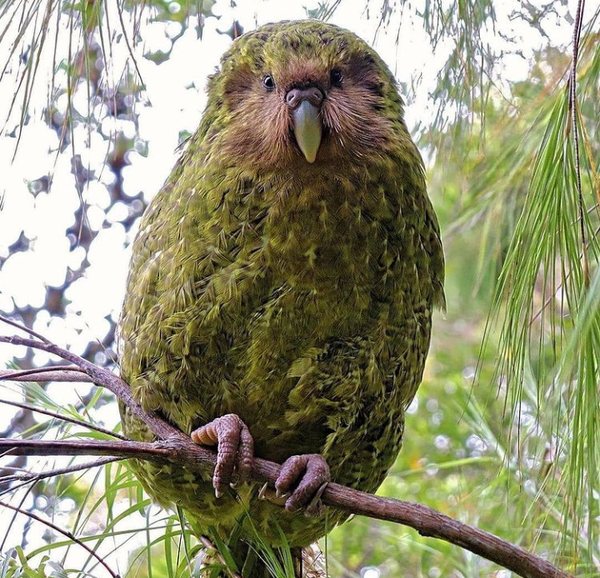
The Kakapo is the world’s heaviest parrot and also one of the most unique. Native to New Zealand, this flightless, nocturnal bird has a mossy green appearance and a sweet, owl-like face.
The Kakapo is critically endangered, with fewer than 300 individuals left. Intensive conservation programs are actively working to save this fascinating species.
From the massive Hyacinth Macaw to the flightless Kakapo, the largest parrots in the world are truly awe-inspiring. While they boast incredible beauty and intelligence, many of these giants face threats from habitat loss and illegal trade.
Protecting these parrots is crucial for future generations to continue marveling at their grandeur.
If you’ve enjoyed learning about these magnificent birds, share this article and help spread awareness about these largest parrots and their conservation!
animal tags: parrots
We created this article in conjunction with AI technology, then made sure it was fact-checked and edited by a Animals Top editor.